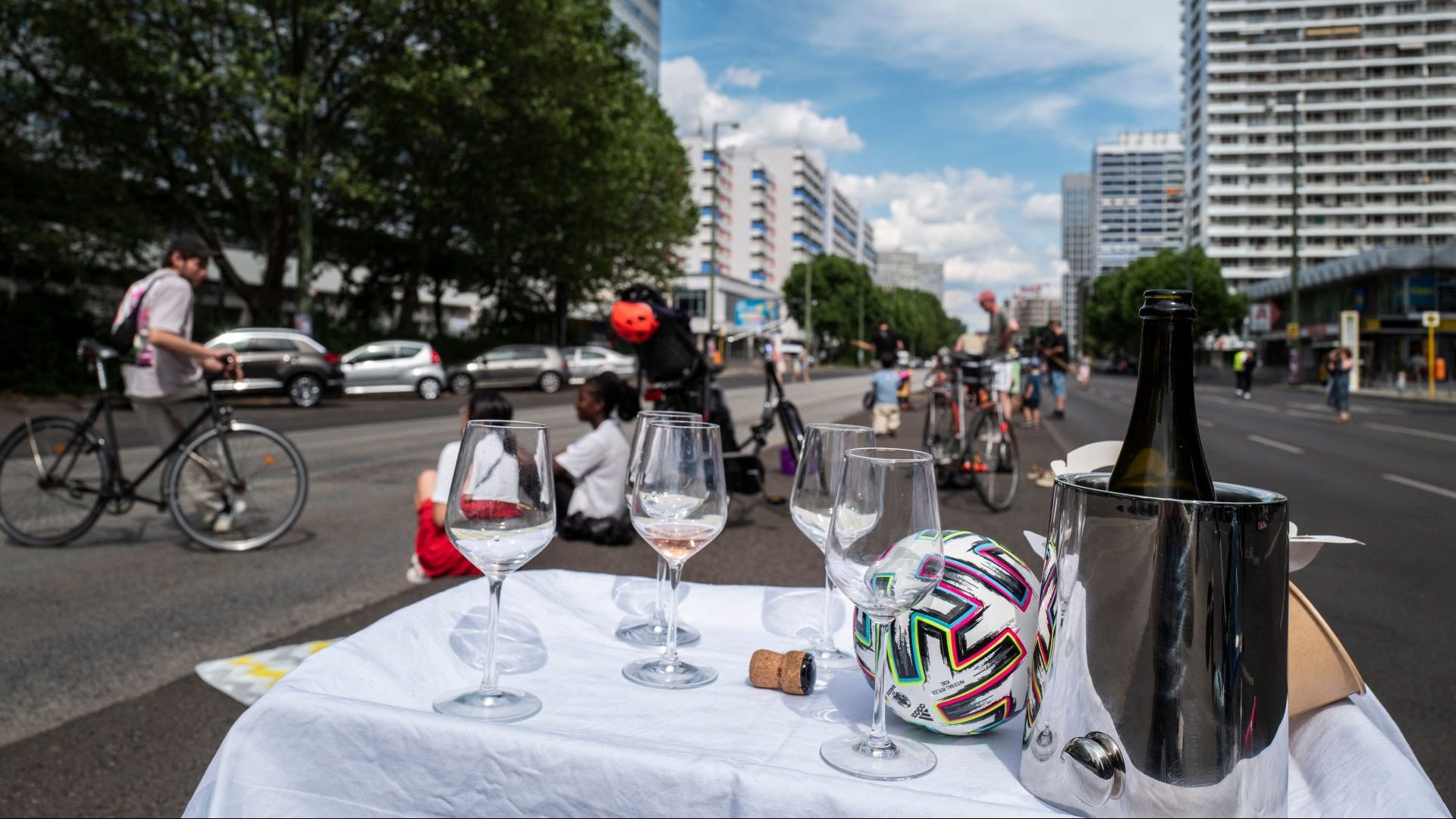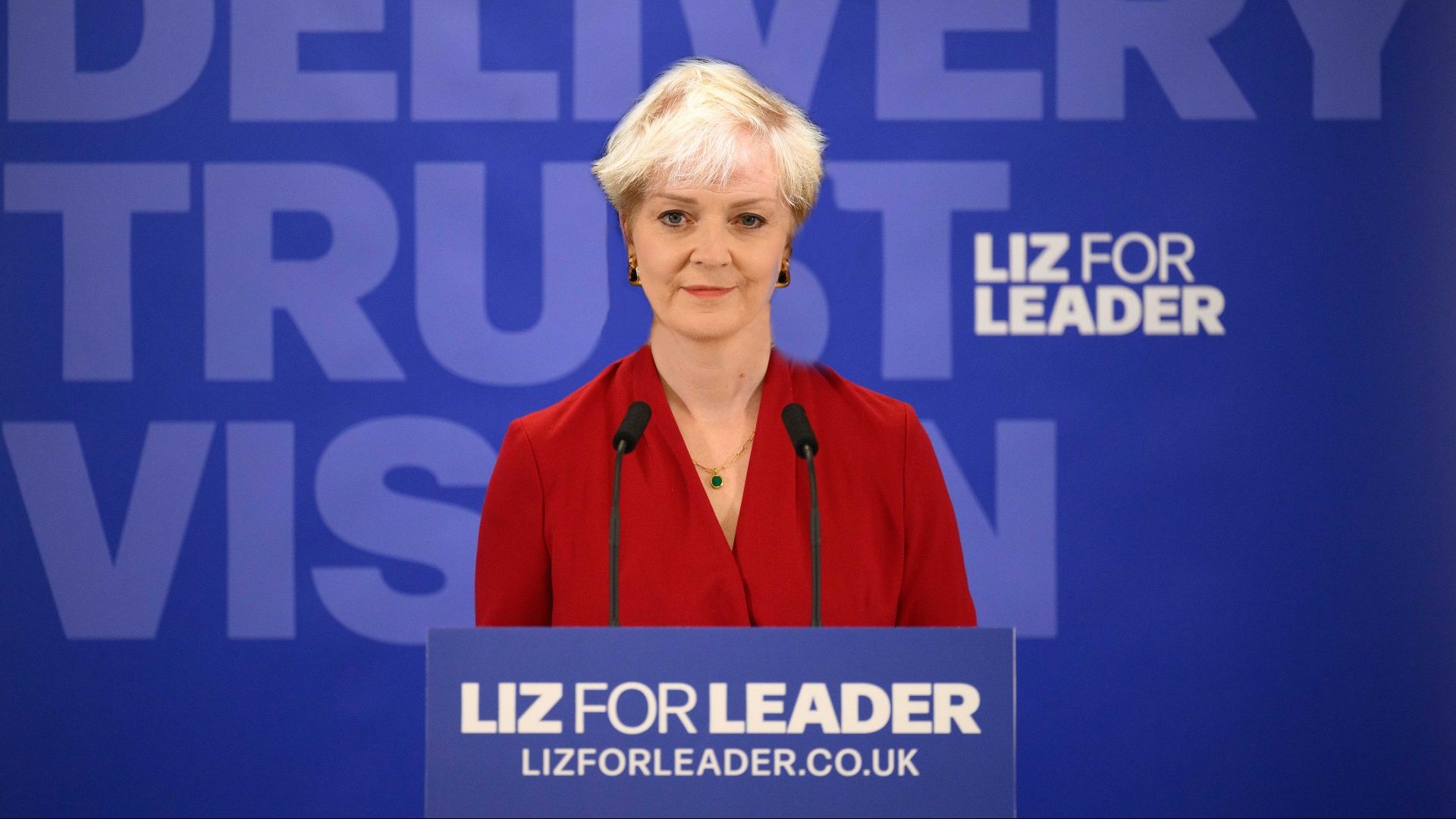“Just because you’ve bought a car it doesn’t mean you’ve also bought 10 square metres of public space to leave it on,” Miguel Anxo Fernández Lores, mayor of the Spanish city of Pontevedra, tells me, firmly.
Once you accept this, he explains in the week that Europe smouldered and hundreds died in an unprecedented heatwave, you’re on your way to saving the planet by challenging the entitlement felt by car owners and purging cities of their domineering climate-destroying vehicles.
Who owns public space? It’s the question at the heart of a defining battle of the climate emergency era. From London to Oslo, through Paris and Barcelona to the Balkans, the fight is on to reduce the burgeoning number and impact of cars – which accounted for nearly a quarter of the European Union’s Co2 emissions in 2019. For decades the answer has been motorists, but this has to change if humanity is to combat what United Nations secretary general Antonio Guterres called the “collective suicide” of rampant climate change.
“Half of humanity is in the danger zone, from floods, droughts, extreme storms and wildfires,” Guterres said in a desperate speech at a climate crisis meeting. “Yet we continue to feed our fossil fuel addiction.”
Transport is the only sector where greenhouse gas emissions have increased in the past three decades. It’s a major cause of urban air pollution as a significant source of dangerous fine particulate matter and nitrogen oxides – in 2020 nine-year-old Ella Kissi-Debrah became the first person in the UK to have pollution listed as a cause of death. From pollution, their role in global warning and collisions, cars cause hundreds of thousands of deaths across Europe each year and people know it, yet our addiction keeps growing. In 2019, 92 million new cars were produced, outstripping global population growth, which was 81.72 million. Millions of those pour into cities, which the Orwell Prize-winning environmental writer George Monbiot has dubbed “Carmageddon”. “So much land is required for driving and parking that there is little left for human life,” he wrote. “The car eats the public space that could otherwise become parks, cycle lanes, markets and playgrounds.”
But, finally, a backlash is growing, spearheaded by enlightened mayors such as Lores. The medieval Spanish city, where he has been mayor since 1999, offers a vision of what could be. Very few square metres of Pontevedro’s public space are touched by cars now. Pedestrian zones, which Lores began to introduce in the old city centre after he first took office, extend everywhere across the Galician city. Through traffic has been stopped, parking driven underground – where residents can buy “affordable” parking spots – or to the periphery, where visitors park for free. Immediately outside the 300,000 square-metre pedestrian area, a 30 km per hour speed limit constrains what traffic is left. A medical doctor and committed environmentalist, Lores estimates his efforts have reduced Co2 emission in Pontevedra by 70 percent.
In essence, he has instigated a radical reset of the car-obsessed 20th century in favour of humanity. Together with an increasing number of local leaders across the continent, he has helped cut greenhouse gases and pollution while at the same time creating a more liveable environment for residents to walk, cycle, dawdle, play, rest, chat, socialise and shop at leisure in congenial, car-free city centres. He has been reelected six times by a grateful public.
The contrast with London – where constant sniping against patchy efforts to reduce car traffic through measures such as Low Traffic Neighbourhoods (LTNs) have forced a retreat by timid politicians – is stark. That’s no surprise when the Conservative prime ministerial candidates barely mentioned climate change even as the country they propose to lead clocks the highest temperatures ever recorded and fires kill people in London. A Times cartoon by Peter Brooks put this succinctly – while the sky burns, a skull-shaped sun looks down on the wannabe prime ministers sticking their heads firmly into the sandy beach. No longer satire, but fact.
London’s Labour mayor Sadiq Khan has presided over the rollout of several LTNs – many during the pandemic lockdowns – that use bollards and planters to block traffic and introduce cycling routes in an effort to reduce car numbers and increase “active” transport such bikes and walking. Together with a charge for the more polluting cars coming into London via the Ultra Low Emission Zone (ULEZ), they are designed to help tackle the city’s often illegally high levels of pollution.
Yet this cut little ice with the vocal campaigners calling these restrictions an assault on their “freedoms” – which usually means the freedom to drive wherever they like regardless of consequences. Anti-LTN protesters, often supported by a car lobby group calling itself the Alliance of British Drivers, have the ear of politicians and spark fear in the hearts of some Londoners by their hyperactive bombardment of households with alarmists leaflets like this: “Mayor Khan wants to nod though changes that would hit drivers with a tax on moving. Don’t let him get away with it.”
In May, an i newspaper investigation found that nearly a third of LTNs in 105 UK-wide authorities had been dismantled, sometimes quietly and without consultation. Separately, a popular cycle lane on wide, busy Kensington High Street was removed after protests and an objection from a billionaire Tory donor.
But Hirra Khan Adeogun, who leads the Car Free Cities campaign for the climate action charity Possible, believes a tipping point is coming when everybody will have to recognise the dangers and act accordingly.
“The climate crisis can’t wait any more, it’s at your doorstep, it means flooding, it means drought, it means heatwaves, it means people dying, and you can’t ignore it any longer,” she told me. “You might balk at the idea of car-free cities but if we don’t start implementing these policies what is going to come is going to be even more terrifying.”
With that in mind campaigners from London look with envy at early adopters such as Oslo, Stockholm and Copenhagen which began pedestrian zones back in the 1960s and 1970s.
The Norwegian capital increased efforts further in the 1990s, moving city centre roads underground to reduce the visibility and impact of cars. Even so, by 2014 people weren’t spending time in the city centre – traffic was still heavy, public spaces were not pleasant and lacked desirable public infrastructure such as benches, drinking fountains and green spaces, so it stepped up again, inspired, like many other cities, by the Paris Climate Agreement in 2015.
Plans were launched to halve Oslo’s direct greenhouse gases by 2022 and cut to zero by 2050, achieving this through car-free zones and streets. Driving patterns were changed to stop through traffic and around 760 on-street parking spaces were removed, with seats, fountains, miniature parks and playgrounds introduced into spaces that once existed only for cars.
“Oslo is not completely car free, but what they’re doing is to deprioritise cars, widening sidewalks, making new pedestrian streets, reducing the number of lanes,” Oddrun Helen Hagen, author of several academic studies of Oslo and other Scandinavian cities, told me. It worked. In a survey in 2019, she found more people cycled or walked to work than took their car, and 69% took public transport.
It wasn’t without hiccups. Some residents worried about access and shopkeepers worried about footfall and deliveries objected. The city administration paused, began a campaign of information and cooperated with locals and businesses. Some companies ditched diesel delivery cars for electric bikes. Driving cars is harder, but access for people with mobility problems, residents, deliveries, emergency services and city logistics remain – as they do everywhere. The main target was through traffic. The same plan is being replicated in the suburbs and in 2025 Norway aims to be the first country to ban sales of new models with combustion engines.
Hagen found reducing car traffic didn’t harm shop sales, which, it turned out, depended not on visiting outsiders but locals, who were more inclined to shop in the new, welcoming environment. The same was reported across other cities, including Slovenian capital Ljubljana.
Crowned Europe’s Green Capital in 2016 by the European Commission, Ljubljana prides itself on having a virtually car-free city centre since 2007, when authorities published a thorough set of proposals for an inclusive, cleaner, more environmentally responsible city under the title Vision 2025. Cars were largely ousted from the heart of the Slovenian capital with the introduction of pedestrian zones – even in Slovenska Cesta, the major thoroughfare of the tourist district. Pedestrian bridges were built to make the sites more accessible on foot. Trees now festoon the city, including the riverfront, and small parks have been created. Cycle lanes and bike-hire schemes with a free first hour were complemented by a free electric vehicle service for the less mobile and a park and ride system with peripheral car parks. The verdant hill leading up to the city’s castle looks down upon several green spaces, accessorised by deck chairs and outdoor cafes. Noise and gas pollution is down. In some ways it’s more like a living room than a busy city centre.
“It makes a good impression for the visitor, but at first of course there was the revolt,” Saša Poljak Istenič, who has written academic papers on the scheme’s impact, told me. “A lot of people work here and reside here and they didn’t want limited parking spaces or access.”
The mayor Zoran Janković engaged in public debate, but didn’t back down. Now the scheme has approval ratings of above 90%.
As with Oslo and Pontevedra, the project stands thanks to a committed politician, often a mayor. Paris mayor Anna Hidalgo and London’s Khan also push the environmentalist agenda, but this can become a tool for rivals and detractors – in London, lower level administrators sometimes scrap LTNs championed by Khan amid widespread assumption that angry voters hate the scheme. A taxi driver told former London mayoral candidate Rory Stewart he would hoover up votes if only he promised to roll back traffic reduction measures.
As the climate emergency intensifies, hundreds of cities embraced some form of Low Emission Zones, according to new findings by the Clean Cities Campaign showing they had been introduced to 320 city regions, with nearly 200 more expected by 2025.
Each city tackles the problem in its own way. Freiburg, which likes to call itself the green capital of Germany, reports a rise in the proportion of cyclists and fall in that of drivers as part of its comprehensive carbon-neutral plans. During the Coronavirus pandemic, Milan decided to reallocate street space to cyclists and pedestrians and, like Hidalgo’s Paris, wants to become a 15-minute city, where anyone can access essential facilities on public transport within a quarter of an hour. Madrid had imposed a ban on most petrol and diesel cars under clean air rules – when a new, right-wing populist mayor tried to repeal this in 2019 street protesters forced a U-turn. Several cities, including Talinn and Augsburg, have offered free public transport.
Barcelona responded with its visionary “superilles”, or “superblocks” – large clusters of nine apartment blocks within which traffic is very limited. The streets inside are equipped with greenery, benches, play areas and lighting to create a social space. After experimentation in the 1990s, in 2016 the city introduced its first full superblock in the Poblenau neighbourhood. Initial outrage soon gave way to admiration — Barcelona now wants 503 superblocks across the city. The grid layout of its pre-car, 19th-century neighbourhoods lends itself to the scheme, but other cities from Latin America, Asia and elsewhere in Europe ask Barcelona planners for advice. It’s even on the radar in the United States, whose sprawling city suburbs depend on cars.
Joel Crawford, an author and campaigner for car free cities, said US cities resisted the car-free movement for now, but predicted that they would have little choice but to convert or die as climate change took hold.
“Everybody’s looking around for a way to keep business as usual for 10-20 years,” Crawford, an American living in Amsterdam, told me. “But I think everyone recognises that 20-25 years is the limit to this game.”
The shape of US cities – with growing suburbs contributing less in taxes but costing more in infrastructure – has led to bankruptcies and is unsustainable, Crawford maintains. Europe has a greater chance, with many cities designed well before cars existed. Waterlogged and with narrow streets, Venice is the obvious example of a car-free city by default. Amsterdam and Copenhagen have established traditions of cycling that shield against car-mania, and have narrow medieval streets and canal routes that make driving miserable. Similarly in Belgian cities such as Bruges and Ghent, being old confers a real advantage in keeping “Carmageddon” at bay. The centres of Prague, Bath and Vienna are largely pedestrian, again more due to their history than recent concerted efforts.
But while they look like city centres designed for walking, Paris looks as if made for cars, even though its present incarnation is Georges-Eugène Haussmann’s ambitious 19th-century redesign. Grateful future drivers capitalised on the wide boulevards and straight roads to colonise the centre. This must make it harder to shift habits, and at least partly explains the battle royal taking place in the city between car campaigners and the determined Hidalgo. She has become a talismanic figure for the anti-car movement for her enthusiasm and resilience amid personal attacks and legal challenges.
“Despite the opposition, whether political or from lobbies (cars, motorbikes, etc), she has succeeded in carrying out projects that have been heavily criticised and even taken to court (the voies sur berges),” Cathy Lamri, head of the pressure group Paris Sans Voitures (Paris without Cars), told me. “The opposition reproaches her for not consulting, for deciding alone, but this is also a way of moving quickly because I think that, unlike many politicians… she and her teams have understood that climate change is faster than expected and that it will have tragic consequences on cities that have not been able to anticipate and adapt.”
Since coming to power, Hidalgo has barred polluting diesel cars from the city’s beltway, pedestrianised the quayside of the Seine and defiantly banned traffic access on a 3.3 km central section of the 1970s-era voies sur berges. She has converted areas used for driving and parking into green spaces and pavements and restricted traffic on major streets. Some districts are closed to traffic on Sundays and holidays. Unfortunately for her, the other, critical, side of this equation – public transport – is found wanting. Unlike London’s Tube, Parisians don’t consider their Metro as user-friendly.
Hidalgo had mixed results elsewhere. Attempts to ban ageing, heavier-polluting vehicles from the city were thwarted and postponed last year while plans for traffic exclusion at school pick up and drop of times haven’t yet materialised. Undaunted, she now wants to prohibit most through traffic in the city centre, across a large zone from the Place de la Bastille in the east to the Place de la Concorde in the west, taking in Le Marais and the Quartier Latin.
Although Paris still has a long way to go if it’s to look like Ljubljana – if that’s even possible in a city of two million – Hidalgo’s progress is keenly watched. As the unofficial capital of Europe, Paris holds sway – if it succeeds, others will follow. If it fails, it would be a huge setback.
The irony, in all these cities, is that once people experience reduced traffic and friendly public places, they’re hooked. “I don’t hear anybody demanding cars return to Ljubljana city centre,” Istenič said.
As with settled arguments over man-made climate change, the noisy minority wields power, especially over right-wing politicians who rarely support the car-related climate action described in this piece. And throughout, one major complaint remains the same – that blocking traffic from one part of a city harms other neighbourhoods as people simply drive elsewhere.
Not so, according to a study co-authored by academic Rafael Prieto Curiel, researcher at CSH Vienna. Called The Paradox of Traffic, it defines travel patterns and tipping points, showing what happens when traffic becomes congested either through popularity of a route or changes through something like an LTN. The build-up of traffic eventually hits where it hurts the driver most – time.
“If I drive and then you drive and then they drive then we create congestion,” Curiel said. “If the journey is going to take two hours – I cannot do that, so I find a bus, a train, I walk, I cycle.”
The pandemic was an opportunity to change attitudes to fit this reality, he said, but it was blown as people scrambled back into their cars, partly because the powerful car lobby presented cars as a refuge from dangers outside.
Evidence counters the perception that people don’t like traffic calming. A 2020 YouGov poll recorded strongly positive views on LTNs, overturning assumptions. Former Ealing Council leader Julian Bell, who faced threats and vandalism for his efforts to reduce traffic, found that, in London’s municipal elections, parties supporting LTNs mostly won if the issue was being spotlighted. The biggest Conservative collapse came in Kensington, where the Conservative council dismantled the High Street cycle lane.
The general public is regularly found to support measures to combat climate change, on account of not wanting their children to live in a burning furnace of nothingness that isn’t in any way improved by knowing they didn’t have to play green levies.
The popular Pontevedra, “chaotic” and “dangerous” before its transformation, is so tranquil you can hear birdsong, the chiming of cutlery and seven-year-olds laughing as they walk to school along safe streets. Locally-run small shops thrive in the absence of suffocating, car-dependent shopping malls.
If anyone needs convincing that other cities should urgently to do the same, the spectacle of a burning Europe is surely enough to show that the time is over for hesitant, wait-and-see attitudes towards climate change. As Lores said: “We’re going at high speed when others are taking step by step approaches. That way they never achieve their goals. We can’t just leave improvements until later. It’s happening – that future is now.”




